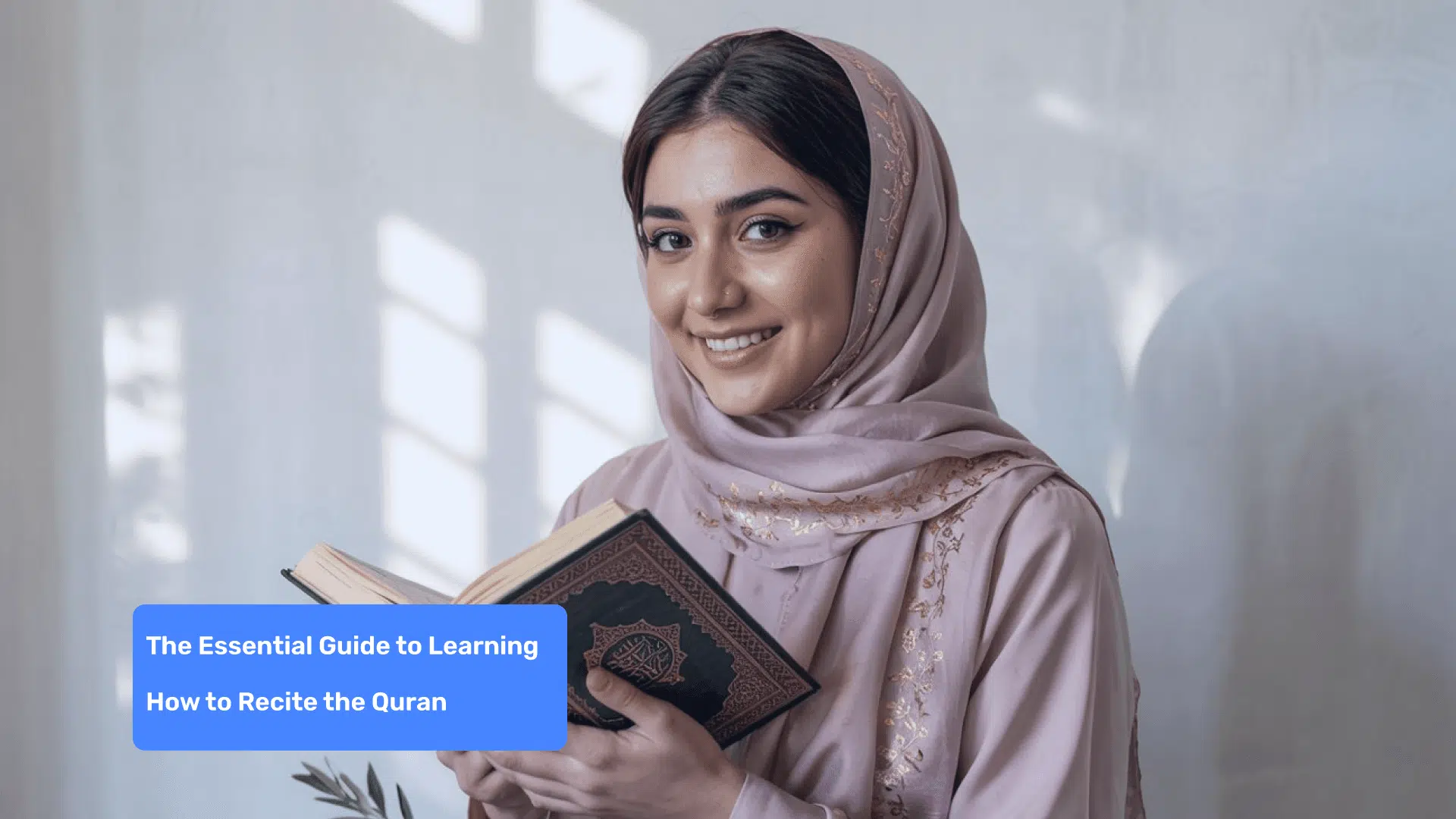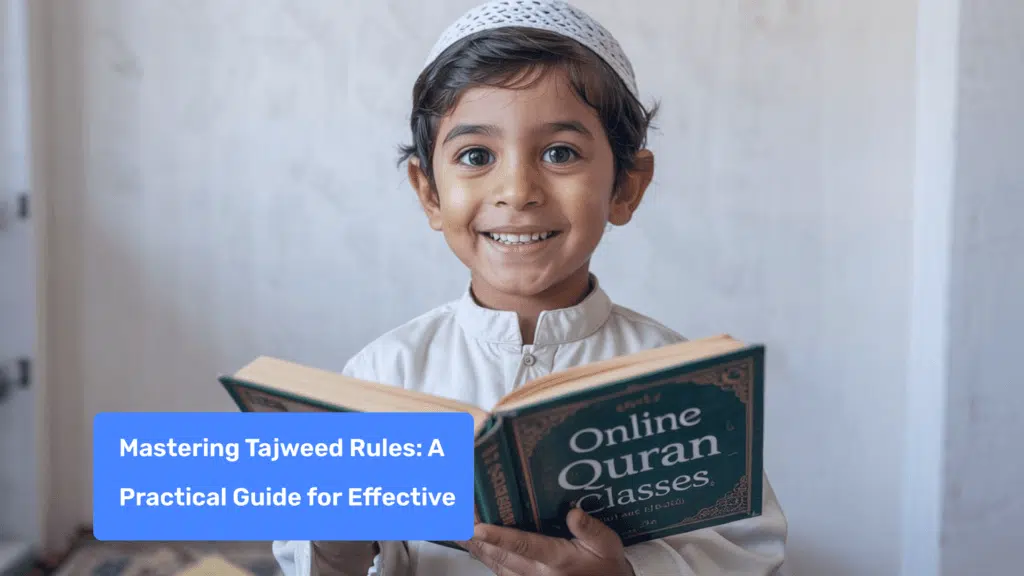In today’s fast-paced world, connecting with spiritual texts provides an anchor of wisdom and guidance that many find essential for navigating life’s complexities. For billions around the globe, the Quran represents not just a religious text, but a comprehensive guide to life itself. This article explores the various dimensions of Quranic learning and offers practical advice for those seeking to deepen their understanding of this sacred scripture, whether they are beginning their journey or looking to enhance their existing practice.
Understanding the Quran
What is the Quran?
The Quran is the holy book of Islam, revealed to the Prophet Muhammad (peace be upon him) by Allah (Subhanahu wa Ta’ala) through the Angel Gabriel over a period of approximately 23 years, from 610 CE to 632 CE. The word “Quran” itself comes from the Arabic verb “qara’a,” meaning “to read” or “to recite,” highlighting its nature as a book meant to be proclaimed aloud and shared within communities.
More than just a religious text, the Quran serves as a source of guidance, wisdom, and knowledge for Muslims and non-Muslims alike who seek to understand its teachings. It encompasses doctrine, worship practices, transactions, and comprehensive laws that guide believers in their daily lives. The Quran addresses virtually every aspect of human existence, from intimate personal matters to principles of governance and international relations.
What distinguishes the Quran from other texts is its preservation in its original form since its revelation more than 1,400 years ago. This preservation occurred through both written records and an unbroken chain of oral transmission, with millions memorizing the text verbatim across generations. This dual mode of preservation has ensured its authenticity in a way that is historically unique among ancient texts.
Muslims consider the Quran a miracle of Islam, with linguistic beauty and depth that remains unmatched. Its verses (ayat, which literally means “signs”) address universal themes of justice, compassion, and human dignity while providing specific guidance for personal conduct and societal organization. The Quran’s literary style shifts between narrative, legislation, exhortation, and poetic expression, creating a textual tapestry that engages readers on multiple levels.
The Quran consists of 114 chapters (surahs) arranged roughly in order of decreasing length rather than chronologically. Each surah has a distinct character and focus, from the comprehensive guidance of Al-Baqarah (The Cow) to the succinct declaration of monotheism in Al-Ikhlas (The Sincerity). This organization creates a reading experience that varies in rhythm and intensity, maintaining engagement through stylistic diversity.
Among these chapters, Al-Asr (The Declining Day) consists of three verses revealed in Makka, emphasizing the fleeting nature of time. Al-Balad (The City) highlights the significance of a specific city and contains 20 verses revealed in Makka. Al-Fajr (The Dawn) is a chapter with 30 verses, also revealed in Makka, focusing on the themes of dawn and divine judgment. Al-Falaq (The Daybreak) consists of five verses revealed in Makka, offering protection from evil. Al-Furqan (The Criterion) has 77 verses revealed in Makka, underscoring the distinction between right and wrong. Al-Hajj (The Pilgrimage) contains 78 verses revealed in Medina, focusing on the rituals and significance of pilgrimage. Al-Jinn (The Jinn) is a chapter with 28 verses revealed in Makka, discussing the existence and nature of jinn. Al-Muddaththir (The Cloaked One) has 56 verses revealed in Makka, addressing the Prophet Muhammad directly. Al-Muzzammil (The Enshrouded One) consists of 20 verses revealed in Makka, emphasizing the importance of measured recitation. Al-Qamar (The Moon) contains 55 verses revealed in Makka, highlighting the miraculous nature of the moon.
The Historical Context of the Quran and Prophet Muhammad
Understanding the historical context in which the Quran was revealed enhances appreciation of its messages. The Arabian Peninsula of the 7th century was characterized by tribal warfare, economic inequality, idolatry, and practices such as female infanticide. The Quran addressed these social ills directly, introducing revolutionary concepts of human equality, social justice, and monotheism that transformed Arabian society and eventually influenced civilizations across three continents.
The Quran was revealed in response to specific situations and questions that arose during the Prophet Muhammad’s mission. Some verses address particular historical events, while others provide timeless principles applicable across cultures and eras. This dynamic of specific context and universal application creates a text that remains relevant despite the vast changes in human society since its revelation.
Structure of the Quran
The Quran as a Living Text
Unlike some religious texts that are primarily studied by specialists, the Quran maintains a presence in daily life for practicing Muslims. Its verses are recited in the five daily prayers, quoted in everyday conversation, displayed in calligraphic art, and consulted for guidance on personal and communal decisions. This integration into daily life transforms the Quran from an abstract text into a living tradition that shapes individual identity and community values.
The Quran explicitly invites readers to interact with it actively, repeatedly encouraging reflection, contemplation, and application of its teachings. It describes itself as “guidance for mankind” (2:185) and “a healing for what is in the breasts” (10:57), suggesting a text meant to be engaged with personally rather than merely venerated from a distance.
Benefits of Learning the Quran
Spiritual Benefits
Reading the Holy Quran is a transformative spiritual journey that provides answers to life’s most profound questions. In its chapters and verses, readers find clarity about their purpose, relationship with the Creator, and guidance for navigating life’s challenges. The Quran offers signs, advice, and rules that help believers cultivate inner peace and outer harmony. Learning tajweed is essential for proper Quranic recitation, enhancing the spiritual connection and improving recitation quality.
For many, the process of engaging with the Quran brings a sense of tranquility that transcends ordinary experience. As described in the Quran itself: “Verily, in the remembrance of Allah do hearts find rest” (Quran 13:28). This healing quality addresses the spiritual emptiness that many experience in modern life, filling it with peace and mercy.
Regular recitation and contemplation of the Quran can develop taqwa—a consciousness of God that influences one’s choices and actions. This heightened spiritual awareness helps practitioners maintain ethical boundaries even when faced with temptation or pressure. The Quran itself states: “This is the Book about which there is no doubt, a guidance for those conscious of Allah” (2:2).
Beyond individual spiritual growth, engagement with the Quran fosters a sense of connection to the global Muslim community (ummah) spanning diverse cultures, languages, and historical periods. This sense of belonging provides psychological security and communal support, particularly valuable in times of personal hardship or societal upheaval.
Many practitioners report that regular engagement with the Quran develops spiritual resilience—the capacity to maintain faith and ethical conduct despite difficulties. The Quran’s narratives of prophets and righteous individuals who persevered through trials provide inspirational models for facing contemporary challenges with patience and steadfastness.
Intellectual Benefits
Beyond spiritual nourishment, the Quran offers substantial intellectual benefits. It encourages critical thinking, contemplation, and reflection. Numerous verses begin with phrases like “Will they not reflect?” or “Are there not signs for those who think?”, emphasizing the importance of intellectual engagement with both the text and the natural world.
The Quran’s approach to knowledge is holistic, integrating spiritual insights with practical wisdom. It provides guidance not merely through abstract principles but through narratives, parables, and examples that illustrate values such as patience, generosity, and compassion. This multifaceted approach to knowledge enriches the reader’s understanding of themselves and their place in the world.
Studying the Quran develops linguistic skills, particularly for those learning Arabic to access the original text. Quranic Arabic has influenced literary and colloquial Arabic across the centuries, making familiarity with its vocabulary and structures valuable for broader language acquisition. Even for non-Arabic speakers, engagement with translations and commentaries enhances vocabulary, reading comprehension, and analytical abilities.
The Quran’s interdisciplinary approach—weaving together theology, ethics, law, history, and natural science—models a holistic perspective increasingly valued in contemporary education and professional settings. This integration of knowledge domains encourages versatile thinking and the ability to connect concepts across traditional academic boundaries.
Regular study of the Quran develops hermeneutical skills—the ability to interpret and apply texts to new situations. This transferable skill proves valuable not only for religious understanding but also for professional contexts requiring textual analysis, such as law, literature, and policy development. The traditional Islamic sciences of tafsir (exegesis) provide sophisticated methodologies for contextual interpretation that can inform approaches to other complex texts.
Social and Psychological Benefits
Beyond the spiritual and intellectual dimensions, Quranic study offers significant social and psychological benefits. Research suggests that religious practices, including scripture reading, correlate with increased psychological well-being, life satisfaction, and resilience in facing hardship. The Quran’s emphasis on gratitude, contentment, and trust in divine wisdom provides cognitive frameworks that promote mental health.
From a social perspective, shared engagement with the Quran builds communities of learning and practice. Study circles (halaqas) create spaces for meaningful connection in increasingly atomized societies. These communities provide mutual support, accountability, and the opportunity to discuss application of Quranic principles to contemporary challenges.
For parents, teaching children the Quran creates opportunities for intergenerational bonding and value transmission. These shared learning experiences establish foundations for ongoing dialogue about ethics, spirituality, and identity formation. As children mature, this educational relationship can evolve into more sophisticated discussions of how Quranic principles apply to emerging social and personal questions.
Learning Quran Online
The Digital Revolution in Quranic Education
The digital revolution has transformed Quranic education, making it accessible regardless of geographical location. This democratization of access represents a significant shift from traditional models that required physical proximity to qualified teachers, often concentrated in particular regions or institutions. Today, a student in Alaska or Australia can learn from a master teacher in Egypt or Saudi Arabia through real-time video communication.
This technological transformation builds upon Islam’s long history of educational innovation. From the earliest days, Muslims developed systems for preserving and transmitting the Quran, from the establishment of scribal traditions to the development of vowel markings that standardized recitation. The move to digital platforms represents a continuation of this adaptive approach to Quranic education.
Online Quran Classes
Online one-to-one Quran classes offer an excellent alternative for those who cannot find qualified tutors nearby. These virtual learning environments provide the comfort of studying from home with flexible scheduling that accommodates diverse lifestyles. For working professionals, parents with young children, people with mobility limitations, or those living in areas with few Muslim communities, this flexibility removes significant barriers to Quranic education.
One significant advantage of online Quran learning is parental supervision, especially important for children’s education. Parents can monitor their children’s progress while professional teachers guide them through a structured curriculum. This combination of convenience and quality instruction has made online Quran education increasingly popular worldwide, even in regions with abundant local teachers.
The personalization possible in one-to-one online learning environments allows teachers to adapt their pace, methodology, and focus to individual student needs. A student struggling with particular pronunciation challenges can receive targeted exercises, while an advanced student can move quickly through familiar material to more challenging content. This customization enhances learning efficiency compared to group settings where instruction must accommodate diverse levels.
Modern online platforms incorporate features specifically designed for Quranic education, including specialized Arabic text display, recording capabilities for pronunciation feedback, interactive tajweed highlighting, and progress tracking systems. These technological tools enhance the learning experience while maintaining the essential teacher-student relationship that has characterized Quranic education for centuries.
Quran Online Resources
Numerous online platforms specialize in Quranic education, offering resources tailored to different learning styles and objectives. Learn Quran Academy, for example, provides comprehensive programs through one-to-one live sessions with qualified tutors who hold ijazah (traditional certification) in Quranic recitation. Similarly, Quran Ayat Institute offers diverse resources including courses, videos, and articles that support independent learning alongside structured programs.
These online resources typically follow a step-by-step approach, beginning with the basics of Arabic script recognition before advancing to proper recitation with tajweed rules. Many platforms also incorporate interactive elements to enhance engagement and retention, making the learning process more effective and enjoyable. Gamification elements like achievement badges, progress dashboards, and friendly competition can particularly motivate younger learners.
Beyond formal courses, the digital landscape offers complementary resources for Quranic learning:
- Mobile applications for daily verse reading, translation comparison, and memorization practice
- Audio recordings by renowned reciters for modeling proper pronunciation and melodic styles
- Digital muṣḥafs (Quran copies) with interactive features like word-by-word translation and grammatical analysis
- Online forums where learners can ask questions and share insights
- Webinars and recorded lectures addressing specialized topics in Quranic studies
- Social media communities providing motivation, accountability, and connection
This ecosystem of digital resources allows learners to create comprehensive learning environments customized to their specific goals, whether basic literacy, memorization, or deeper understanding of meanings.
Quran Recitation and Memorization
The Oral Tradition of the Quran
The Quran was first revealed as an oral text, with the Prophet Muhammad receiving and transmitting it verbally before written compilation began. This oral origin established recitation as the primary mode of engaging with the Quran, a practice that continues to define its place in Muslim life. Even as literacy has become widespread, the melodious recitation of the Quran remains central to worship, celebration, and daily spiritual practice.
This emphasis on oral transmission has preserved the Quran’s precise pronunciation across fourteen centuries and diverse linguistic communities. The science of tajweed developed to codify this pronunciation, ensuring that readers anywhere in the world can reproduce the sounds of the text as they were taught by the Prophet Muhammad to his companions.
Quran Recitation Techniques and Correct Pronunciation
Proper recitation of the Quran requires mastery of tajweed, the set of rules governing pronunciation, intonation, and rhythm. Quranic recitations, or Qira’at, are distinct forms of pronunciation used to recite the Quran, with historical significance in the Islamic tradition. Efforts made by Caliph ‘Uthman to unify the recitation styles during his reign were crucial in preserving the integrity of these recitations. Tajweed ensures that the Quran is recited exactly as it was revealed to Prophet Muhammad (PBUH), preserving its integrity and beauty across generations.
The science of tajweed covers various aspects of recitation, including:
- Makhārij al-ḥurūf: The precise articulation points for each Arabic letter
- Ṣifāt al-ḥurūf: The essential characteristics of letters that distinguish similar sounds
- Aḥkām al-madd: Rules for elongation of certain vowel sounds
- Aḥkām al-waqf wal-ibtidāʾ: Guidelines for pausing and beginning recitation
- Aḥkām al-nūn as-sākinah wal-tanwīn: Rules governing the pronunciation of the letter nūn and nunation
- Qalqalah: The distinctive “bouncing” sound required for certain letters
Mastering these rules transforms recitation into a melodious experience that touches the heart while honoring the text’s sanctity. Online platforms offer specialized tajweed courses that break down these complex rules into manageable lessons, often using audio-visual aids to demonstrate correct pronunciation.
Beyond technical correctness, beautiful recitation involves developing tartīl—a measured, rhythmic pace that allows for reflection on meanings—and exploring the various maqāmāt or melodic modes traditional to Quranic recitation. While these aesthetic dimensions build upon tajweed’s foundation, they add expressivity that enhances the listener’s emotional and spiritual engagement with the text.
Quran Memorization Techniques and Benefits
Memorization of the Quran (hifz) holds a special place in Islamic tradition. Those who commit the entire Quran to memory are given the honorable title of Hafiz or Hafiza and are promised special status in both this life and the hereafter. The Prophet Muhammad said: “The one who was devoted to the Quran will be told on the Day of Resurrection: ‘Recite and ascend (in ranks) as you used to recite when you were in the world. Your rank will be at the last verse you recite.'”
Beyond spiritual rewards, memorization confers cognitive benefits increasingly recognized by educational psychology. The process develops concentration, disciplined study habits, and memory capacity that transfer to other learning domains. Research suggests that Quran memorization activates multiple memory systems—verbal, visual, auditory, and kinesthetic—creating robust neural pathways that support overall cognitive function.
Successful memorization requires systematic approaches:
- Consistency is paramount – daily practice, even if brief, yields better results than irregular intensive sessions
- Breaking text into manageable portions prevents overwhelm—many traditional systems use the “page method,” memorizing one page before proceeding to the next
- Understanding the meaning enhances retention by creating semantic associations with the text
- Regular revision of previously memorized portions prevents forgetting, following structured review schedules
- Reciting aloud reinforces memory pathways through auditory feedback and articulation practice
- Utilizing multiple senses strengthens memory—writing verses, listening to recordings, and visualizing page layouts
- Teaching others what you’ve memorized solidifies your own retention through the process of explanation
Many online programs offer structured memorization courses with accountability systems to support learners through this challenging but rewarding process. These programs often pair students with memorization coaches who track progress, provide encouragement, and adjust strategies based on individual learning patterns.
Reading the Quran Effectively
Understanding Quranic Arabic
While translations provide access to the Quran’s meanings, understanding the original Arabic unlocks deeper dimensions of the text. Quranic Arabic has specific linguistic features and contextual nuances that translations cannot fully capture, from the multivalent meanings of key terms to the rhetorical devices that create its distinctive literary power.
For beginners, courses like Noor Al Bayan provide foundations in Arabic script recognition and pronunciation. As learners advance, they can explore Arabic grammar, vocabulary, and the rhetorical devices that give the Quran its distinctive eloquence. This linguistic journey enhances appreciation of the text’s literary beauty while providing more accurate understanding of its messages.
The Arabic of the Quran represents a classical form of the language that differs from modern standard Arabic and colloquial dialects. While challenging initially, this linguistic distance preserves the text’s original meanings and poetic qualities. Learning Quranic Arabic provides access not only to the sacred text but also to a rich literary tradition spanning fourteen centuries of commentary, poetry, and prose inspired by the Quran’s language.
Several approaches to learning Quranic Arabic have proven effective:
- Word-frequency based methods that prioritize high-frequency terms appearing hundreds of times in the text
- Grammatical function approaches that teach the structural patterns of the language rather than extensive vocabulary
- Surah-based methods that analyze familiar chapters in increasing depth
- Root-based systems that leverage the patterns of Arabic morphology to expand vocabulary efficiently
Technological tools have made Quranic Arabic more accessible, with software that provides word-by-word analysis, identifies grammatical structures, and links related words through their trilateral roots. These resources allow even beginning students to engage with the original text while developing their linguistic skills progressively.
Reading the Quran with Tajweed Rules
Reading with tajweed goes beyond correct pronunciation—it honors the divine origin of the text by preserving its intended delivery. The Prophet Muhammad (PBUH) emphasized beautiful recitation, saying: “Beautify the Quran with your voices, for a beautiful voice increases the Quran in beauty.”
Online tajweed courses typically employ visual aids, audio demonstrations, and interactive exercises to help learners internalize the rules. Many platforms offer recorded recitations by renowned reciters, providing models for students to emulate. Regular practice with feedback from qualified teachers gradually develops the muscle memory and ear training necessary for proper recitation.
The comprehensive system of tajweed developed over centuries includes color-coding conventions that visually represent different rules on the printed page. Modern digital Qurans often incorporate these visual aids, highlighting letters affected by specific rules and providing popup reminders for proper pronunciation. These visual cues support learners as they develop the ability to recognize and apply rules automatically.
For many learners, mastering tajweed involves overcoming pronunciation challenges specific to their native language. Arabic phonemes absent from languages like English or Mandarin require developing new articulation habits through targeted exercises. Qualified teachers can identify these specific challenges and provide personalized guidance to address them methodically.
Exploring the Quran’s Chapters
The Quran’s chapters, or surahs, are a treasure trove of wisdom, guidance, and inspiration. Each chapter has its own unique character and message, contributing to a comprehensive guide for living a righteous and fulfilling life. The diversity in themes and styles across the surahs ensures that the Quran addresses a wide range of human experiences and concerns.
Some of the most well-known chapters include Al-Fatihah, Al-Baqarah, Al-Imran, and Al-Nisa. Al-Fatihah, also known as “The Opening,” is a prayer for guidance, mercy, and protection, setting the tone for the entire Quran. Al-Baqarah, the longest surah, provides a comprehensive guide to faith, worship, and social conduct, covering topics from prayer and fasting to justice and charity. Al-Imran emphasizes the importance of family and community, while Al-Nisa addresses the role of women in society and provides detailed guidance on family law and social justice.
Other notable chapters include Al-Kahf, Al-Mulk, and Al-Hadid. Al-Kahf, or “The Cave,” explores themes of faith, patience, and the trials of life, offering stories that inspire resilience and trust in Allah. Al-Mulk, or “The Sovereignty,” highlights the majesty and power of Allah, encouraging reflection on the natural world and the divine order. Al-Hadid, or “The Iron,” discusses the balance between spiritual and material life, emphasizing the importance of justice, charity, and the responsible use of resources.
These chapters, along with the rest of the Quran, provide a holistic framework for understanding the divine will and living a life that aligns with the principles of justice, compassion, and faith.
Surahs of the Quran
The Quran contains a total of 114 surahs, each with its own unique name and significance. Some of the most well-known surahs include:
- Al-Fatihah (The Opening): A prayer for guidance, mercy, and protection, setting the spiritual tone for the entire Quran.
- Al-Baqarah (The Cow): A comprehensive guide to faith, worship, and social conduct, covering a wide range of topics from prayer and fasting to justice and charity.
- Al-Imran (The Family of Imran): Emphasizes the importance of family, community, and steadfastness in faith.
- Al-Nisa (The Women): Provides detailed guidance on family law, social justice, and the role of women in society.
- Al-Kahf (The Cave): Explores themes of faith, patience, and the trials of life, offering stories that inspire resilience and trust in Allah.
- Al-Mulk (The Sovereignty): Highlights the majesty and power of Allah, encouraging reflection on the natural world and the divine order.
- Al-Hadid (The Iron): Discusses the balance between spiritual and material life, emphasizing the importance of justice, charity, and the responsible use of resources.
Each surah, with its unique focus and message, contributes to the Quran’s overarching purpose of guiding humanity towards a life of righteousness, justice, and spiritual fulfillment. By engaging with these chapters, readers can gain a deeper understanding of the divine wisdom and apply its teachings to their daily lives.
Getting Started with Quran Learning
Creating a Quran Learning Schedule
Effective Quran learning requires structure and planning. Creating a realistic schedule that accounts for your other responsibilities while providing consistent engagement with the Quran is essential for long-term success. The Prophet Muhammad emphasized the value of consistency, saying: “The most beloved of deeds to Allah are those that are most consistent, even if they are small.”
Consider the following when developing your schedule:
- Identify your peak concentration hours for more challenging aspects of study
- Allocate shorter, more frequent sessions rather than occasional marathon sessions
- Include varied activities (recitation, memorization, study of meanings) to maintain engagement
- Build in regular review periods to reinforce learning
- Allow flexibility to accommodate life’s unpredictable nature
- Set aside specific times for studying with teachers or learning communities
- Create different schedules for different seasons of life, acknowledging periods of higher and lower availability
Digital tools can help track progress and maintain accountability, providing motivation as you advance through your learning journey. Many Quran learning applications include features like streak counters, daily notifications, and progress visualization that support consistent practice.
Assessing Your Starting Point
Before creating a learning plan, honestly assessing your current knowledge and skills provides necessary context for setting realistic goals. Consider evaluating:
- Your ability to recognize and pronounce Arabic letters
- Your familiarity with basic tajweed rules
- Whether you can read Arabic text, even if slowly
- How much of the Quran you may have memorized previously
- Your understanding of Arabic vocabulary and grammar
- Your knowledge of the Quran’s themes and structure
This assessment helps identify appropriate starting points in curriculum sequences and prevents frustration from attempting material beyond your current preparation. Many online programs offer placement tests that systematize this evaluation process.
Staying Motivated and Engaged
Setting Quran Learning Goals
Clear, achievable goals provide direction and motivation for Quran learning. These goals might include completing recitation of the entire Quran within a specific timeframe, memorizing particular chapters, or mastering certain tajweed rules.
Breaking larger goals into smaller milestones creates a sense of regular achievement. For example, rather than simply aiming to memorize Surah Al-Baqarah (the longest chapter), set targets for individual pages or sections. Celebrating these smaller victories maintains momentum and prevents discouragement.
Goals are most effective when they are:
- Specific rather than general (“memorize Surah Yaseen” rather than “memorize more Quran”)
- Measurable with clear completion criteria
- Attainable given your current skills and available time
- Relevant to your personal priorities and interests
- Time-bound with target dates for completion
Regularly reviewing and adjusting goals maintains their motivational power. As skills develop, previous challenges become manageable and new aspirations emerge. This evolving goal structure creates a sense of continuous growth throughout the lifelong journey of Quranic learning.
Joining a Quran Learning Community
Learning in community amplifies motivation and enriches the educational experience. Online Quran learning communities connect students across geographical boundaries, creating supportive networks for shared growth.
These communities provide opportunities to:
- Participate in group recitations
- Discuss interpretations and applications of verses
- Share challenges and solutions
- Celebrate achievements together
- Learn from others’ diverse perspectives
- Maintain accountability through regular check-ins
- Develop friendships based on shared spiritual values
- Access collective wisdom about learning resources and methods
Many online platforms facilitate these connections through forums, virtual study circles, or social media groups dedicated to Quranic studies. Some communities organize specific programs like Ramadan completions of the Quran (khatm) or memorization circles where participants recite to each other from memory.
Local mosques and Islamic centers often host in-person Quran circles that complement online learning. These face-to-face communities provide immediate feedback on recitation and opportunities for deeper discussion of applications. They also foster intergenerational connections, with older community members sharing traditional knowledge and younger members contributing contemporary perspectives.
Overcoming Common Challenges
The journey of Quranic learning inevitably involves challenges. Anticipating these difficulties and developing strategies to address them sustains progress during discouraging periods.
Common challenges include:
- Pronunciation difficulties with Arabic phonemes absent from one’s native language
- Maintaining consistency during busy seasons of life
- Plateau periods where progress seems slow despite continued effort
- Memory challenges when attempting to memorize lengthy passages
- Difficulty understanding complex grammatical structures
- Cultural or contextual knowledge gaps that affect comprehension
- Isolation when learning without community support
Effective strategies for overcoming these challenges include:
- Breaking difficult tasks into smaller components
- Varying learning methods to address different aspects of the challenge
- Seeking specialized resources targeting specific issues
- Connecting with others facing similar challenges for mutual support
- Focusing on process rather than outcomes during difficult periods
- Scheduling regular consultations with teachers for targeted guidance
- Celebrating small victories to maintain motivation
Conclusion
The journey of learning the Quran is both intellectually stimulating and spiritually fulfilling. Whether your goal is basic literacy, beautiful recitation, memorization, or deep understanding, today’s resources make this sacred knowledge more accessible than ever before.
The key to success lies in consistent effort, structured learning, and maintaining connection with both the text and a supportive community. As you progress in your Quranic studies, you’ll likely find that the benefits extend far beyond religious knowledge—affecting your worldview, character, and approach to life’s challenges.
Remember that learning the Quran is not merely an academic exercise but a lifelong journey of growth and transformation. Each engagement with the text offers new insights and deepened understanding. By approaching this journey with sincerity and dedication, you open yourself to the guidance and wisdom that has illuminated countless lives throughout history.
As the Quran itself states: “Indeed, We have sent down to you a Book in which is your mention. Then will you not reason?” (21:10). This invitation to reasoned engagement with the text awaits each person who approaches it with an open heart and disciplined mind. The rewards of this engagement—spiritual, intellectual, psychological, and social—continue to unfold throughout a lifetime of learning.
















